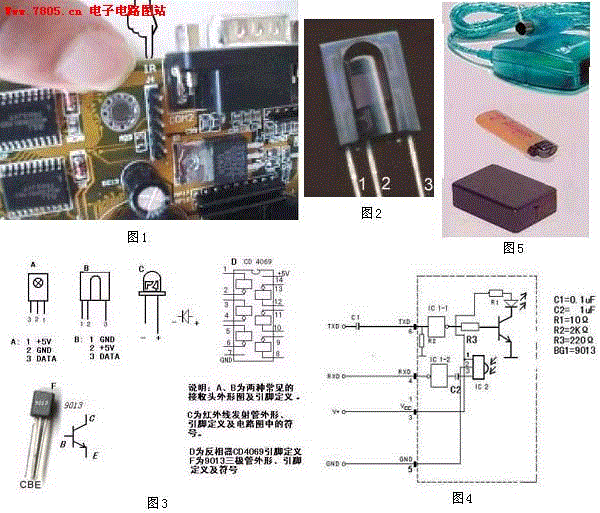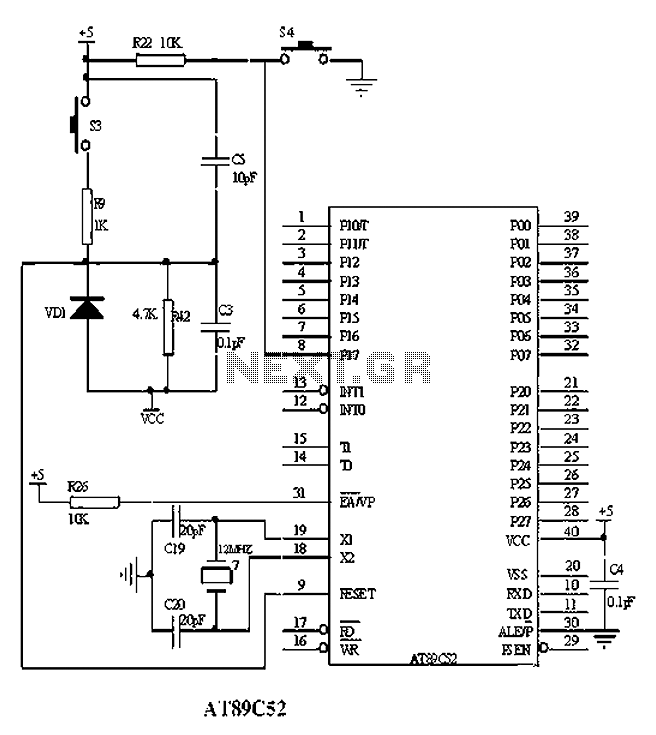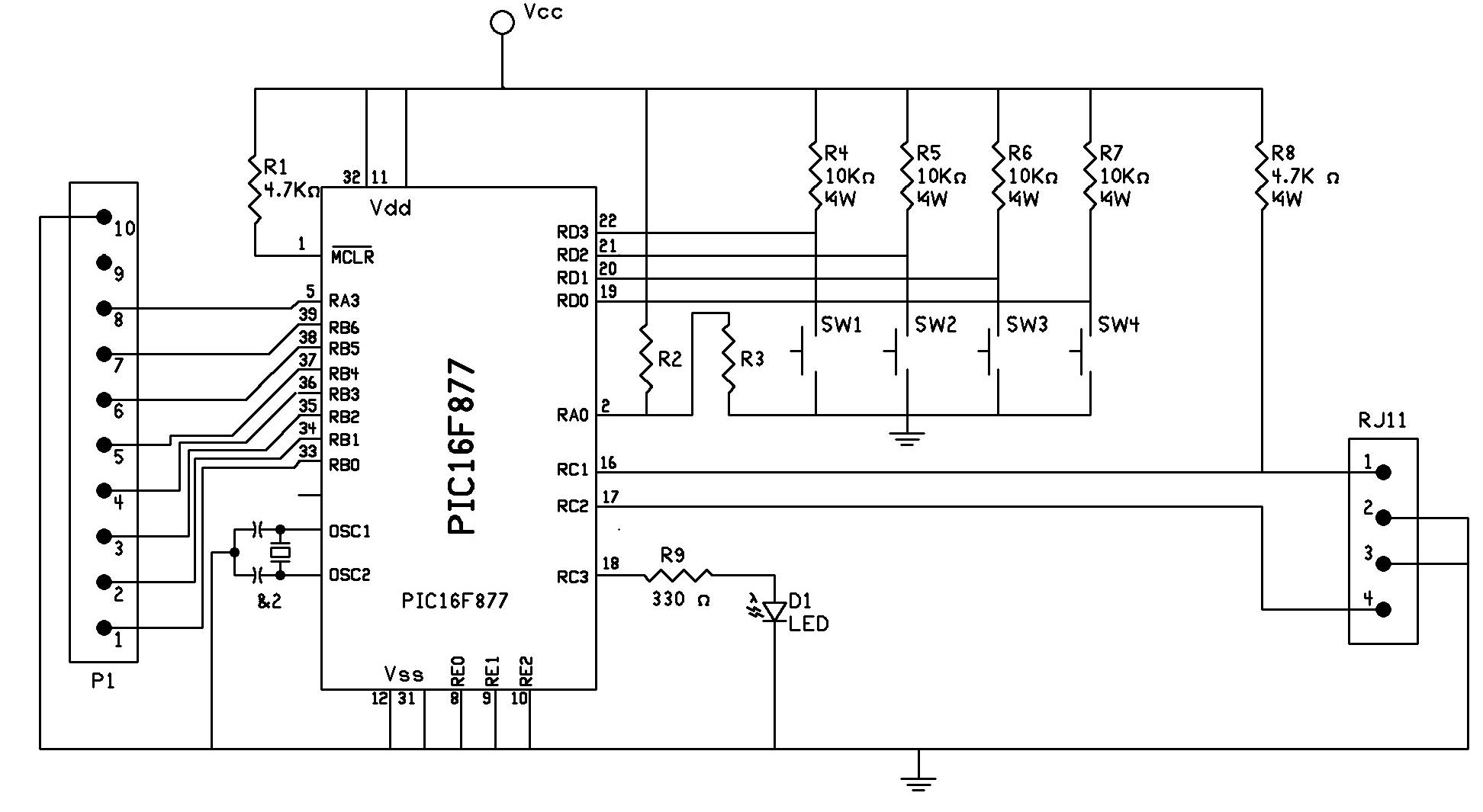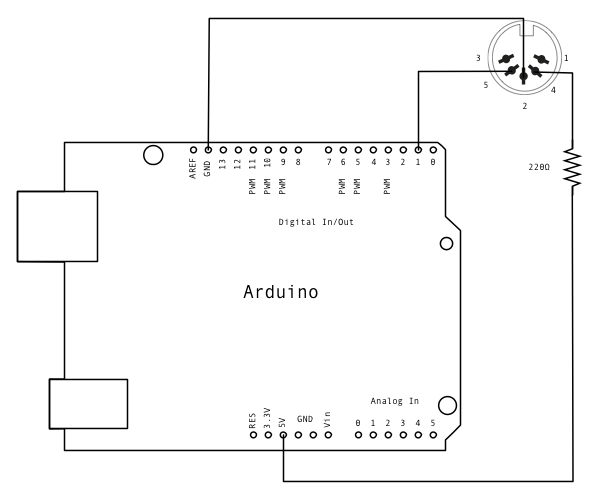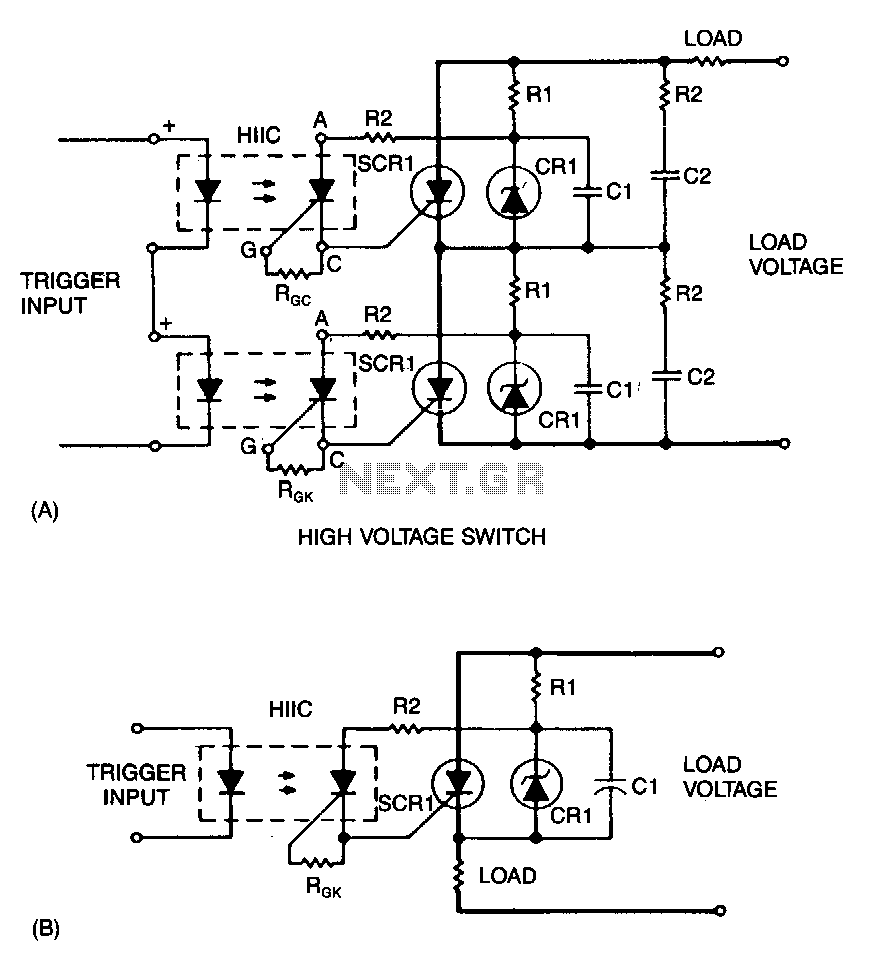
midi to trigger interface
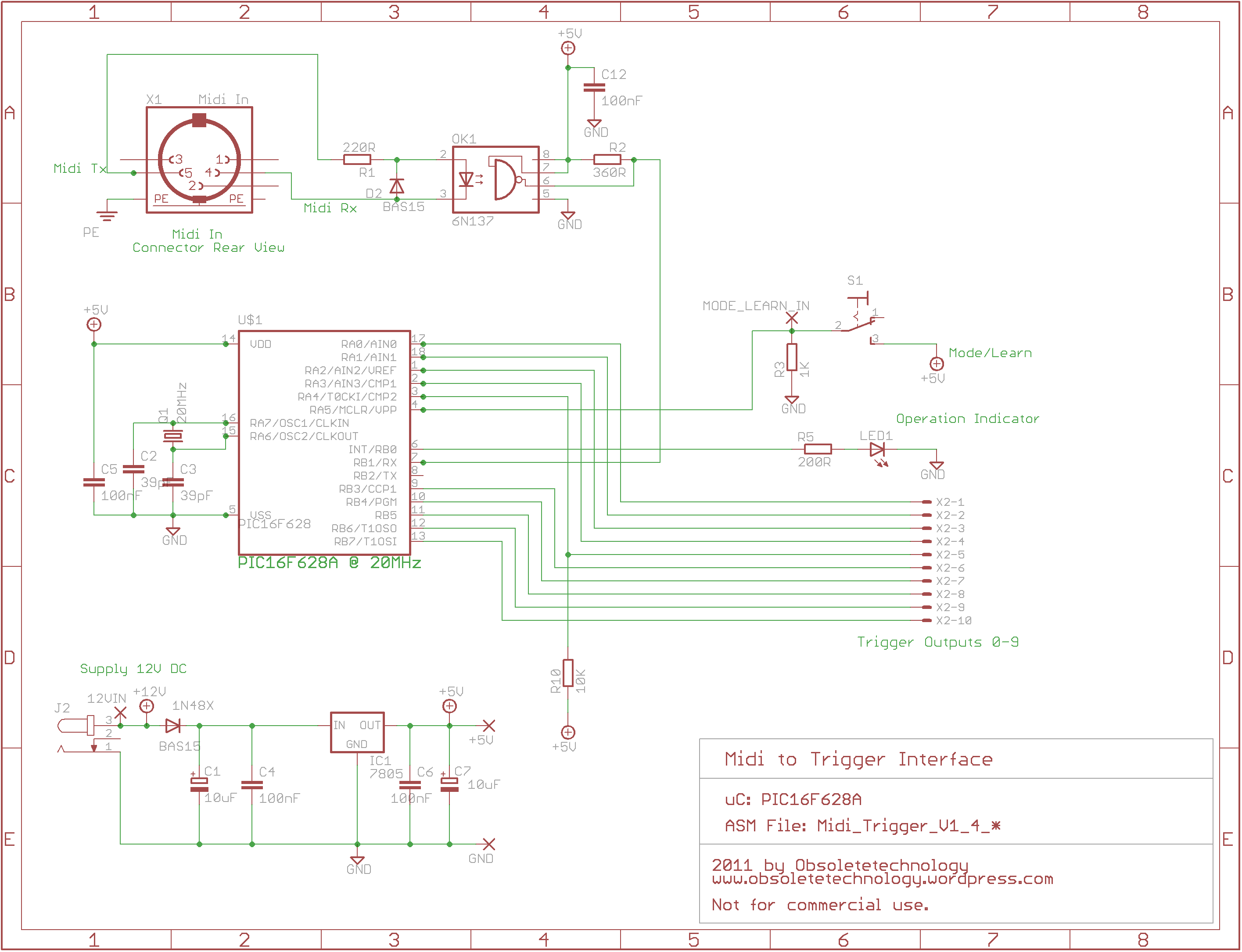
A low-cost, low-part-count MIDI to Trigger interface with 10 outputs. This MIDI to Trigger interface generates a TTL (5V) trigger signal for each note across a range of ten notes. It can be utilized, for instance, as a MIDI interface for vintage drum expanders or as a multiple-trigger generator for modular synthesizers.
The MIDI to Trigger interface is designed to efficiently convert MIDI note messages into corresponding trigger signals suitable for controlling various electronic musical devices. The core functionality involves receiving MIDI signals, interpreting the note-on and note-off events, and generating a TTL-compatible pulse for each active note. This system is particularly advantageous for users seeking to integrate modern MIDI controllers with older drum machines or modular synthesizers that rely on trigger inputs.
The circuit typically consists of a MIDI input section, which includes an opto-isolator for electrical isolation and signal integrity. The MIDI data is processed by a microcontroller or dedicated MIDI decoder IC, which interprets the incoming MIDI messages. The outputs are derived from the microcontroller's GPIO pins, where each pin corresponds to a specific MIDI note, generating a 5V TTL pulse when a note-on event is detected.
To ensure stable operation, the design may incorporate a power supply section that provides the necessary voltage levels and decoupling capacitors to filter out noise. The trigger outputs can be connected directly to the trigger inputs of drum machines or synthesizers, allowing for precise timing and synchronization of musical events.
The low part count of the design contributes to its cost-effectiveness and ease of assembly, making it an attractive option for hobbyists and professionals alike. The interface can be housed in a compact enclosure, with clear labeling for each output, facilitating straightforward connections to various devices. Overall, this MIDI to Trigger interface represents a practical solution for expanding the creative potential of electronic music setups.Low cost, low part count Midi to Trigger interface with 10 Outputs. This Midi to Trigger interface generates a TTL (5V) trigger signal per note over a range of ten notes. It can be used for example as a midi interface for vintage drum-expanders or as a multiple-trigger generator for a modular synthesizer.
I developed.. 🔗 External reference
The MIDI to Trigger interface is designed to efficiently convert MIDI note messages into corresponding trigger signals suitable for controlling various electronic musical devices. The core functionality involves receiving MIDI signals, interpreting the note-on and note-off events, and generating a TTL-compatible pulse for each active note. This system is particularly advantageous for users seeking to integrate modern MIDI controllers with older drum machines or modular synthesizers that rely on trigger inputs.
The circuit typically consists of a MIDI input section, which includes an opto-isolator for electrical isolation and signal integrity. The MIDI data is processed by a microcontroller or dedicated MIDI decoder IC, which interprets the incoming MIDI messages. The outputs are derived from the microcontroller's GPIO pins, where each pin corresponds to a specific MIDI note, generating a 5V TTL pulse when a note-on event is detected.
To ensure stable operation, the design may incorporate a power supply section that provides the necessary voltage levels and decoupling capacitors to filter out noise. The trigger outputs can be connected directly to the trigger inputs of drum machines or synthesizers, allowing for precise timing and synchronization of musical events.
The low part count of the design contributes to its cost-effectiveness and ease of assembly, making it an attractive option for hobbyists and professionals alike. The interface can be housed in a compact enclosure, with clear labeling for each output, facilitating straightforward connections to various devices. Overall, this MIDI to Trigger interface represents a practical solution for expanding the creative potential of electronic music setups.Low cost, low part count Midi to Trigger interface with 10 Outputs. This Midi to Trigger interface generates a TTL (5V) trigger signal per note over a range of ten notes. It can be used for example as a midi interface for vintage drum-expanders or as a multiple-trigger generator for a modular synthesizer.
I developed.. 🔗 External reference
